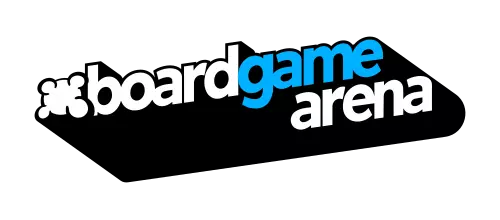Denne side fra BGA wiki vises på engelsk, fordi det ikke er oversat til dit sprog. Du er velkommen til at oversætte det!
Objective
The basic goal of the game is to avoid having to pick up cards, and try to force the other players to do so. Everyone starts with 66 points - you lose one for each "bullhead" on a card you have to pick up. When one player has lost all of their points, the game will end at the end of the current round and the player with the most points left wins!
On Your Turn
- Everyone starts a round with 10 cards in their hand. Four cards are placed on the table to start four rows.
- Every player secretly chooses a card, and then all of the cards are revealed at the same time.
- When the cards are revealed, they are placed on the ends of the rows, from lowest value played to highest, following two rules:
- Cards are always placed in ascending order.
- Cards are always placed next to the card on the board with the smallest difference between them.
- As play progresses, the rows will fill up with cards - at five cards, a row is full.
- If someone's card would go onto a full row (is the sixth card), that player has to pick up all of the cards in that row, and they lose as many points as there are "bullheads" on the cards (different cards are worth different amounts - see below). The card that the person played becomes the starting point of a new row.
- If someone plays a card that is lower than the numbers at the end of all of the rows, then that player must take a row of their choice, losing points as normal, and start a new row in its place with their card.
Bullheads
- Each card from 1 to 104 has a number of bullheads on it - this indicates how many points it is worth when it is picked up.
- Cards which end in the number 5 (ex. 5, 15, 25) are worth 2 points.
- Cards which end in the number 0 (10, 20, 30) are worth 3 points.
- Cards which are multiples of 11 (11, 22, 33) are worth 5 points.
- The 55 card ends in 5 and is a multiple of 11, so it is worth 7 points.
- All other cards are worth 1 point.
End of a round
- The round ends when all 10 cards have been played from players' hands. If no-one has lost all of their points, then a new round begins.
- If someone is out of points, then the game is over and whoever still has the most points is the winner.
Variants
Tactics
- This ruleset changes the number of cards in play (based on how many people are playing) - other than that the rules are the same.
- The number of cards is equal to 10 times the number of players plus 4 (5 players = cards 1 to 54, 6 players = cards 1 to 64, etc.)
- Therefore, every card that could be played will find its way onto the table at some point.
- This changes the strategy and makes paying attention to which cards are yet to be played more important.
Logic
- Apply the same rules as Tactics, with these additional rules.
- At the start of the round all of the cards are placed on the table face up
- Players take turns choosing cards one at a time to build their hands before the round properly starts.
Professional
- Cards are played to the left OR the right, depending on which is closest in numerical value.
- The cards are still played from smallest to largest, and are placed in the closest possible location on the left or right side of all of the four rows, at the time the card is played.
- If there is tie for closest possible location (which is now possible), the player can choose where to play it.
- Example: (just for demonstration)
- Row #1 has 2, 3, 4, 5, 6. Row #2 has 10 and 15. Row #3 and #4 have much higher numbers.
- Player A plays a 9, player B plays an 8.
- In this case, the 8 would be played first since it's lower than the 9. Player B can choose where to play it, since it's equally close to the 10 and to the 6.
- If they choose to play on row #2 to the left of the 10, then the 9 would have to be played on row #1 on the right side of the 6, but can't fit there since there's 5 cards already in the row! Player A has to take that row of cards, then the 9 is left to start a new row.
- If a card is played which has nowhere to go (if it is larger than any of the left cards and smaller than any of the right cards), the person who played it takes a row of their choice (similarly to if they had played a very small card without the professional variant). The card that the person played becomes the starting point of a new row.
Denne side kommer fra BGA wiki, og er skrevet af BGA spilleres fællesskab. Du er velkommen til at redigere det!

